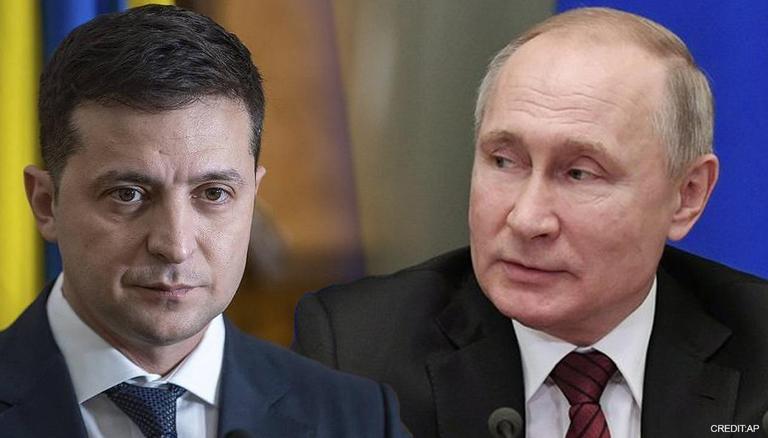
On the eve of scheduled bilateral peace talks in Istanbul, Ukraine’s Security Service (SBU) executed a large-scale drone strike against five Russian air bases, marking one of the deepest penetrations of Russian territory since the conflict began. Both Kyiv and Moscow acknowledged the operation on Sunday, underscoring its strategic significance and timing.
According to an SBU statement, Ukrainian operatives deployed 117 first-person-view (FPV) drones—smuggled into Russia and concealed inside trucks and beneath residential roofs—to strike military airfields in the Murmansk, Irkutsk, Ivanovo, Ryazan, and Amur regions. “These are Ukrainian actions that will definitely be in history textbooks,” President Volodymyr Zelensky declared on his Telegram channel. He hailed the assault as “brilliant” and “perfectly prepared,” noting that Ukrainian forces had managed to extract all personnel involved before the attacks commenced.
The operation, codenamed “Spiderweb,” was reportedly in development for more than 18 months under Zelensky’s personal supervision. A senior Ukrainian intelligence official, speaking on condition of anonymity, explained that the FPV drones were fitted with explosive charges and programmed to strike Russian long-range aviation assets. Video footage shared by Ukrainian security services appeared to show flames engulfing several Russian aircraft and hangars as drones swarmed overhead.
Russian Response and Damage Assessment
The Kremlin’s Defense Ministry condemned the strike as a “terrorist attack,” confirming that multiple airfields sustained damage. In a statement carried by state newswires, Moscow reported that “several units of aircraft caught fire” at installations near Murmansk’s Olenya air base, Belaya air base in Irkutsk, and other remote locations. Russian Tu-95 bombers—capable of carrying up to eight guided cruise missiles each—and A-50 early-warning aircraft were among the assets believed to have been damaged or destroyed. These losses could deal a significant blow to Russia’s long-range strike capability, which relies on such platforms to launch missile barrages from deep within Russian airspace.
Local officials in remote regions confirmed the incidents. Irkutsk Governor Igor Kobzev said that a military facility in the village of Sredny was targeted by drones launched from a concealed truck, marking “the first such attack to target Siberian territory.” In Murmansk, Governor Andrey Chibis reported similar strikes on military sites and appealed to residents to “remain calm” amid heightened security alerts.
Domestic Reaction in Russia
Within Moscow’s pro-war media ecosystem—often referred to as the “Z community”—voices compared Sunday’s assault to “Russia’s Pearl Harbor.” Military blogger Roman Alekhin warned that retaliation should be “as severe as the U.S. response to Pearl Harbor, or even harsher.” Another pro-Kremlin commentator, writing under the pseudonym “Two Majors,” suggested the drone strike provided “a reason to launch nuclear strikes on Ukraine.”
Rybar, a Telegram channel with ties to Russia’s Defense Ministry, described the attack as “a very sensitive blow to Russia’s nuclear shield,” arguing that the damage to Tu-95 and A-50 aircraft was irreplaceable. Such assessments underscore Moscow’s concern that even its remote facilities are vulnerable to sabotage.
Bridge Collapses in Western Russia
In a separate but likely related series of incidents, two bridges collapsed overnight Sunday in Russia’s Kursk and Bryansk regions, both bordering Ukraine. Local authorities reported that the collapses derailed a freight train and a passenger train, causing at least seven fatalities and injuring 76 people on the passenger service, which was carrying 388 passengers at the time. Photographs from the scene showed emergency crews conducting large-scale rescue operations beneath the rubble of the destroyed highway spans.
Russia’s Investigative Committee has launched criminal probes into both collapses, initially citing explosive devices as the cause before amending its statement without explanation. Although the Kremlin has blamed Kyiv for the infrastructure failures, Ukraine’s intelligence service has neither confirmed nor denied involvement, saying only “no comment” when asked.
Implications for Peace Talks
Sunday’s events coincide with growing uncertainty over the peace discussions set to begin in Istanbul on Monday. President Zelensky reaffirmed Ukraine’s commitment to the talks, confirming that Defense Minister Rustem Umerov will head the delegation. Zelensky reiterated Ukraine’s core demands: “A complete and unconditional ceasefire, the release of prisoners, the return of stolen children, and preparation for a meeting at the highest level to secure lasting peace.”
Russia has indicated that its peace memorandum will not be made public. Meanwhile, U.S. involvement continues: Secretary of State Marco Rubio spoke by phone with Russian Foreign Minister Sergei Lavrov at Moscow’s request, reinforcing calls for direct dialogue to end the conflict. As both sides prepare to sit down in Istanbul, the timing and scale of Ukraine’s drone operation underscore how deeply the war’s front lines have shifted—and signal that reaching a durable settlement may be more complex than ever.
